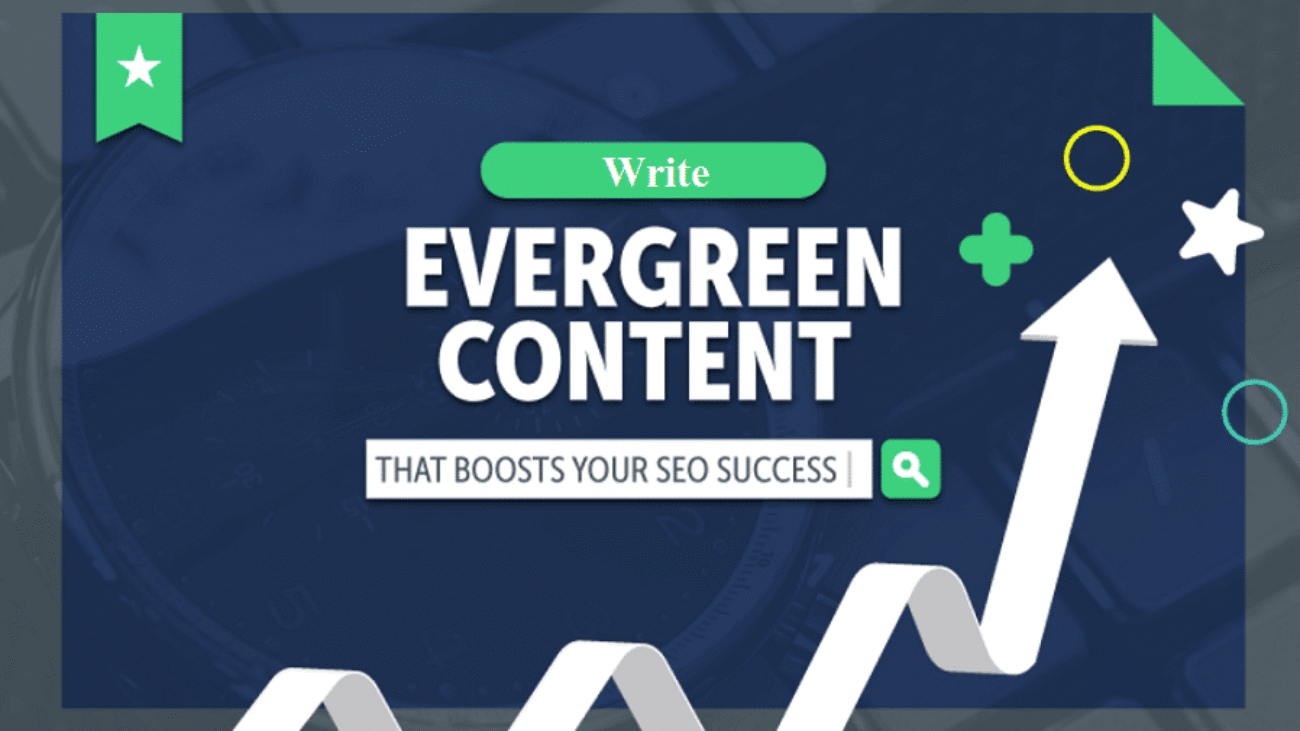Introduction
When building a successful content strategy, one of the biggest decisions you’ll face is whether to focus on evergreen content or trendy content. Both have value, but which one truly benefits your brand’s long-term growth? Which supports your SEO goals better? Which converts more leads? And most importantly which fits your business model and audience best?
In this comprehensive guide, we’ll break down the difference between evergreen and trendy content, compare their strengths and weaknesses, and help you build a balanced content strategy that aligns with SEO best practices in 2025.
What Is Evergreen Content?
Evergreen content refers to topics that remain relevant and useful over a long period of time. Like evergreen trees that retain their leaves year-round, this type of content retains value for months or even years after it’s published.
Examples of Evergreen Content:
-
“How to Start a Blog in 2025”
-
“SEO Basics Every Beginner Should Know”
-
“Tips for Remote Work Productivity”
-
“What Is Domain Authority?”
Characteristics:
-
Long-lasting
-
Steady traffic
-
Typically informational or educational
-
Ideal for backlink building
-
Great for long-term SEO
What Is Trendy Content?
Trendy content, on the other hand, capitalizes on current events, news, or viral trends. It’s designed for immediate impact and high shareability.
Examples of Trendy Content:
-
“Google’s March 2025 Algorithm Update Explained”
-
“Top TikTok SEO Hacks Going Viral This Week”
-
“Latest ChatGPT-5 Features for Marketers”
Characteristics:
-
High engagement initially
-
Short lifespan
-
Requires constant updates
-
Good for brand visibility and virality
SEO Perspective: Which One Ranks Better?
Evergreen Content & SEO
Evergreen articles are SEO powerhouses. Here’s why:
-
They naturally accumulate backlinks over time
-
They rank for long-tail keywords
-
They require fewer updates
-
Google favors content freshness, but also content consistency
With proper optimization, evergreen content can consistently appear on page one of Google for years.
Trendy Content & SEO
While trendy content can rank fast due to low keyword competition, it often:
-
Drops quickly in rankings
-
Needs regular refreshing
-
Doesn’t accumulate backlinks long-term
Still, Google’s Top Stories carousel and News tab give trendy content high visibility great for short bursts of traffic.
Performance Over Time: Evergreen vs. Trendy
| Metric | Evergreen Content | Trendy Content |
|---|---|---|
| Lifespan | Long (1–5+ years) | Short (days to weeks) |
| Search Volume | Steady over time | High during trend peaks |
| Engagement Spike | Moderate | High initially |
| Maintenance Required | Low | High |
| SEO Value | Strong long-term | Quick short-term wins |
| ROI | Higher over time | Lower after trend fades |
Content Strategy Goals: What Are You Trying to Achieve?
Before choosing between evergreen and trendy content, consider your content goals:
1. Traffic Generation
-
Trendy content wins in the short term.
-
Evergreen content wins in the long term.
2. Lead Generation & Conversions
-
Evergreen content (like how-to guides and case studies) performs better.
-
Trendy content may not match buyer intent.
3. Brand Authority
-
Both can help.
-
Evergreen content builds expertise and trust.
-
Trendy content boosts brand relevance and presence.
4. Social Shares
-
Trendy content wins.
-
It’s built for shareability, memes, and quick reactions.
5. Backlink Acquisition
-
Evergreen content gets more backlinks over time.
-
Trendy content gets links only if it goes viral quickly.
Pros and Cons of Evergreen Content
✅ Pros:
-
Generates long-term traffic
-
Requires fewer updates
-
High backlink potential
-
Improves topical authority
-
Great for pillar content
❌ Cons:
-
Slower to rank
-
Less engagement in social media
-
Might seem “dry” if not executed well
Pros and Cons of Trendy Content
✅ Pros:
-
Quick wins
-
High social media engagement
-
Ideal for building topical relevance fast
-
Great for newsjacking
❌ Cons:
-
Short content lifespan
-
Requires frequent updates
-
Risk of losing relevance quickly
-
Less sustainable for SEO
How to Find Evergreen Content Topics
Use tools like:
-
Google Trends (look for consistent interest over 12+ months)
-
Answer The Public
-
Semrush Topic Research
-
Chat GPT prompts:
“List 10 evergreen blog topics for personal finance blogs in 2025.”
Look for topics tied to fundamentals, not fads.
How to Find Trendy Content Ideas
Use:
-
Google News
-
Twitter/X Trends
-
Exploding Topics
-
Reddit (check what’s trending in your niche)
-
Buzz Sumo
Tip: Use trendy topics to support or refresh evergreen pages.
The Ideal Content Strategy? Blend Both
A smart strategy combines the stability of evergreen with the virality of trends.
Evergreen content is your:
-
Foundation
-
SEO asset
-
Consistent performer
Trendy content is your:
-
Amplifier
-
Traffic booster
-
Social media magnet
Sample Strategy: 80/20 Evergreen to Trendy
-
80% evergreen posts: How-tos, case studies, long-form SEO guides, product pages.
-
20% trendy posts: Industry updates, event coverage, memes, AI features.
This keeps your content balanced, future-proof, and engaging.
Real-Life Case Study
Site: Moz Blog
-
Evergreen: “What Is Domain Authority?” – Still ranks years later
-
Trendy: “Google’s Core Update Analysis” – Drives traffic every algorithm change
Takeaway: They use trendy content to ride search spikes, but build authority through evergreen foundations.
Updating Evergreen Content with Trendy Insights
Want the best of both worlds?
Refresh evergreen content with:
-
New stats
-
Trending tools
-
Updated screenshots
-
Current examples
Google loves fresh + foundational content.
Tools to Help You Execute This Strategy
| Use Case | Tools |
|---|---|
| Keyword Research | Semrush, Ahrefs, Google Trends |
| Topic Discovery | ExplodingTopics, BuzzSumo, ChatGPT |
| SEO Optimization | Surfer SEO, Frase, Clearscope |
| Trend Monitoring | Twitter/X, Reddit, Google News |
| Content Calendar | Trello, Notion, CoSchedule |
| Performance Tracking | Google Analytics, Search Console |
Final Verdict: Which Is Better?
Evergreen content is better for SEO, ROI, and lead generation.
Trendy content is better for visibility, shares, and timely engagement.
But in 2025, you shouldn’t have to choose.
Smart marketers create a hybrid content strategy one that anchors in evergreen pillars but rides waves of timely trends.
How to Repurpose Evergreen and Trendy Content for Maximum ROI
Creating content takes time, effort, and resources. That’s why repurposing your evergreen and trendy content can maximize ROI without starting from scratch.
Repurposing Evergreen Content:
Since evergreen content has a long shelf life, it’s perfect for repurposing into various formats that continue to drive traffic:
-
Turn blog posts into YouTube tutorials or podcasts.
-
Create an infographic from a step-by-step how-to guide.
-
Convert case studies into social media carousels.
-
Use older content for email drip campaigns.
-
Update and re-publish evergreen blogs annually with fresh stats and tools to retain their rankings.
Each repurpose extends the content’s life while diversifying its reach across channels.
Repurposing Trendy Content:
Trendy content has a shorter life span, but you can still squeeze extra value from it:
-
Compile trend highlights into a quarterly newsletter.
-
Turn social media polls or viral posts into blog commentary.
-
Use trend reports in webinars or LinkedIn articles.
-
Create reaction videos or expert panel discussions on trends that affect your niche.
The goal is to evolve trend-based pieces into evergreen angles once the hype cools off. For instance, a blog titled “Google’s April 2025 Update: What Changed?” can later become “Understanding Google’s 2025 Algorithm Changes: A Year in Review.”
Understanding Content Decay and How to Prevent It
Content decay refers to the natural decline in performance of your blog posts or landing pages over time especially if they’re not updated or optimized.
Evergreen content decays slower, but eventually, it too loses freshness if ignored.
How to Combat Decay:
- Regularly refresh content – Every 6 to 12 months.
- Update old statistics, visuals, and tools.
- Add internal links to new relevant posts.
- Re-optimize meta tags and keywords.
- Merge underperforming trendy posts into a valuable evergreen guide.
With a clear updating process, your best content remains competitive in search results even years later.
Audience Behavior: What Are They Searching For?
Understanding audience intent is critical when deciding between evergreen or trendy content.
For Evergreen:
-
Users search with how, what, best, or guide queries.
-
They seek solutions, step-by-step instructions, or education.
-
Great for bottom and middle of the funnel (BOFU/MOFU) targeting.
For Trendy:
-
Users search with when, latest, update, or trending.
-
They seek news, timely tips, or community discussions.
-
Best for top-of-the-funnel (TOFU) and brand awareness.
Pro Tip: Use evergreen content to nurture leads and conversions. Use trendy content to attract new eyes and grow top-of-funnel awareness.
Balance by Platform
Your distribution platform should also influence your content type.
-
Blogs & Knowledge Bases: Ideal for evergreen content.
-
Social Media & Email Blasts: Perfect for trendy content.
-
YouTube & Podcasts: Can host both, depending on how you title and angle them.
-
LinkedIn & Twitter/X: Use trends to drive engagement, then link to evergreen resources.
The idea is to make trendy content your hook and evergreen content your anchor.
Final Tips for an Effective Content Mix
- Audit your current library – What’s performing? What’s stale?
- Map content to the funnel – Trendy for attention, evergreen for nurturing and conversion.
- Align with SEO keywords – Use keyword research to validate content viability.
- Mix formats – Articles, videos, infographics, reels.
- Build internal links between new trends and old evergreen assets.
In summary, neither evergreen nor trendy content is “better” in isolation. The best strategy in 2025 is a smart blend of both, tailored to your brand’s goals, audience behavior, and SEO ambitions. With the right mix, your content will not only attract attention but sustain authority and traffic for years.

